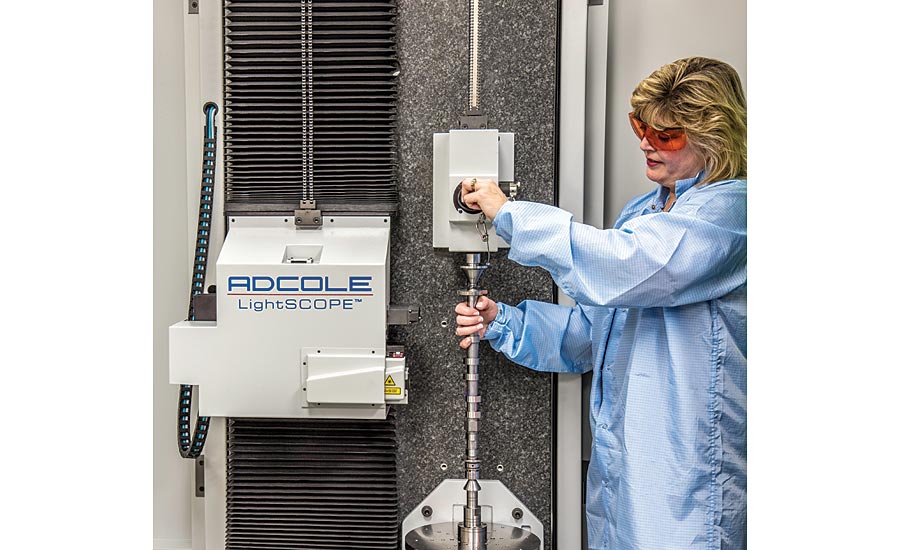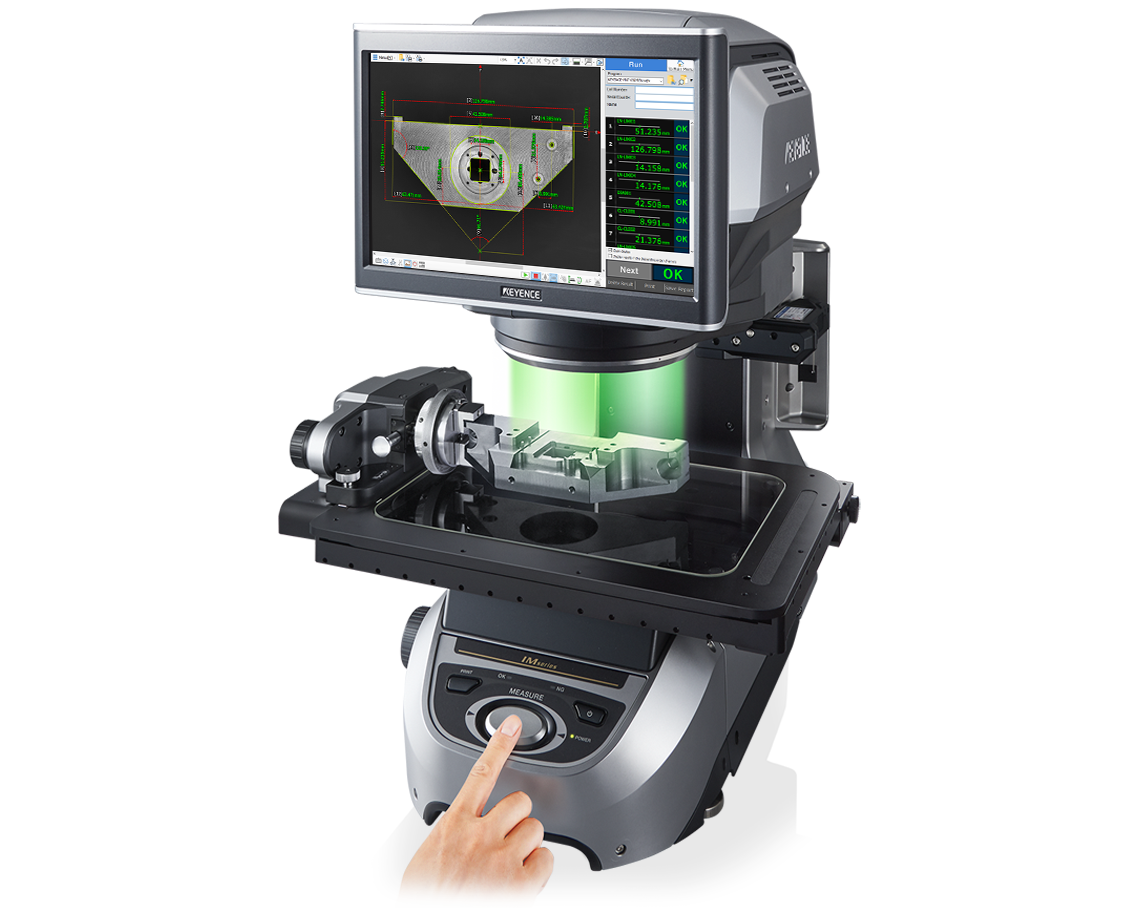A complete walkthrough to deploying an optical measurement system in your facility
A complete walkthrough to deploying an optical measurement system in your facility
Blog Article
Recognizing Just How Optical Measurement Systems Enhance Top Quality Control Processes
When you're aiming to improve top quality control procedures, recognizing optical dimension systems is important. These technologies provide specific, non-contact dimensions that can change your assessment approaches. By leveraging innovative methods, you can enhance operations and minimize errors. However how precisely do these systems incorporate into existing operations, and what advantages do they bring? Let's explore the essential aspects that make optical dimension a game-changer in high quality administration.

The Basics of Optical Dimension Equipments
Optical dimension systems play a critical function in ensuring item quality throughout various sectors. These systems use light-based technologies to gather exact information about physical characteristics, such as measurements, surface coating, and color. By using sensors, cameras, and lasers, you can attain non-contact dimensions that decrease the threat of destructive fragile items.
Comprehending the basics of these systems is essential for reliable top quality control. They operate principles like refraction, diffraction, and reflection, permitting you to assess different materials and forms. The accuracy and rate of optical dimensions allow real-time surveillance, which assists you recognize issues early in the manufacturing procedure.
Furthermore, these systems can be integrated with software program for boosted data evaluation, creating a detailed top quality monitoring strategy. By leveraging optical dimension systems, you not just increase efficiency but additionally guarantee your items fulfill rigid top quality standards, eventually boosting consumer complete satisfaction.
Types of Optical Dimension Technologies
Many sorts of optical dimension technologies are offered, each designed to meet particular demands in quality assurance. You might experience laser triangulation, which gauges distance by analyzing the angle of a shown laser beam. This modern technology is ideal for catching specific dimensions in 3D space.
One more alternative is structured light, where you predict a collection of light patterns onto a surface to create a thorough 3D design. This technique works well for complex geometries.
Then there's interferometry, which can discover minute modifications in surface accounts by assessing the disturbance patterns of light waves. This is particularly valuable for applications needing nanometer accuracy.
You may likewise take into consideration optical coherence tomography, which offers high-resolution photos of internal features without damaging the item. Each innovation offers different demands, so choosing the best one is crucial for attaining highest control results.
Secret Advantages of Optical Dimension in Quality Assurance
When it involves quality assurance, leveraging optical dimension technologies can substantially improve accuracy and performance. These systems enable you to catch comprehensive dimensions promptly, reducing the time required for examinations. You'll discover that optical measurements can recognize even the smallest defects that might go undetected with conventional methods, ensuring product consistency.
Furthermore, making use of optical measurement systems frequently brings about decreased waste and remodel, as you catch problems early in the manufacturing procedure. You'll additionally appreciate the non-contact nature of numerous optical methods, which lessens damages to fragile elements during assessment. This versatility allows for a more comprehensive array of applications throughout various materials.
With real-time information collection, you can make enlightened decisions swiftly, streamlining your top quality assurance processes (optical measurement). Eventually, incorporating optical measurement right into your quality assurance approach not only improves performance however likewise enhances client satisfaction by delivering higher-quality products regularly
Just How Optical Measurement Systems Improve Precision and Accuracy
Optical measurement systems increase accuracy and accuracy by improving measurement resolution, permitting you to discover also the smallest variations. With real-time data evaluation, you can make instant modifications and decisions, ensuring your procedures remain on track. This combination not only boosts product high quality but additionally enhances your quality control efforts.
Enhanced Dimension Resolution
By leveraging advanced modern technologies, optical measurement systems greatly enhance dimension resolution, leading to improved precision and accuracy in top quality control. You'll notice a considerable difference in the clarity of dimensions, enabling you to identify also the tiniest inconsistencies from requirements. Inevitably, boosted measurement resolution not only increases item quality but also optimizes resource utilization, making sure that you meet client assumptions constantly.
Real-Time Data Evaluation
Although conventional measurement systems typically count on delayed information processing, real-time information analysis in optical measurement systems revolutionizes the way you keep track of top quality. You'll experience improved precision given that you can quickly contrast measurements against predefined standards. Additionally, real-time information assists you accumulate important insights over time, tweak your quality control processes.
Integrating Optical Dimension Into Existing High Quality Control Processes
Integrating optical measurement into your existing quality assurance processes can substantially boost precision and performance. By including optical dimension systems, you can enhance information collection, minimizing human error while increasing the speed of evaluations. Begin by identifying key factors in your assembly line where optical measurements will provide the most value.
Next, educate your team on the brand-new innovation, guaranteeing they recognize just how to make use of the systems efficiently. This training will help them translate results rapidly and precisely.
You should likewise develop a method for integrating optical data into your existing high quality administration software. This assimilation enables real-time analytics and coverage, improving decision-making.
On a regular basis assess the information and comments from your group to identify any areas for enhancement. With these steps, you'll not just boost your quality control processes but likewise cultivate a society of constant improvement within your company.
Instance Researches: Effective Execution of Optical Dimension Systems
In this area, you'll check out how optical measurement systems have changed quality assurance in markets like aerospace and auto manufacturing - optical measurement system. You'll see real-world instances of just how these modern technologies enhanced accuracy and performance. These this article instance research studies highlight the concrete advantages of incorporating optical systems right into manufacturing processes
Aerospace Sector Applications
As the aerospace industry encounters increasing demands for accuracy and efficiency, companies are turning to optical dimension systems to enhance their top quality control procedures. A leading airplane manufacturer integrated optical dimension technology to inspect generator blades, minimizing examination time by 50% while boosting accuracy.
Automotive Production Success
Optical dimension systems have also made significant strides in the automotive manufacturing sector, where accuracy is crucial to automobile performance and safety and security. By applying these innovative systems, makers like BMW and Ford have actually significantly boosted their quality assurance procedures. For instance, BMW incorporated optical measurement for body assembly, making certain elements fit perfectly, which minimized rework and enhanced manufacturing effectiveness. In a similar way, Ford embraced 3D scanning methods to spot dimensional errors in engine parts, resulting in less defects and boosted dependability. These study show exactly how optical measurement systems encourage you to achieve tighter resistances, lessen waste, and elevate overall item quality. Accepting my explanation these modern technologies can cause substantial competitive advantages in today's hectic auto industry.
Future Trends in Optical Measurement and Top Quality Control
While developments in innovation remain to improve the production landscape, the future of optical dimension and quality control looks encouraging - optical measurement systems. You'll see a significant change towards automation and AI combination, allowing systems to analyze data in real-time. This means quicker decision-making and lowered human error, ultimately enhancing product top quality
Furthermore, as 3D imaging technology improves, you'll take advantage of even more accurate measurements of complicated geometries, making it less complicated to preserve tight tolerances. The surge of cloud-based services will likewise permit you to access data remotely, promoting collaboration and improving procedures.
Additionally, sustainability will certainly play an important function in future advancements. Anticipate optical dimension systems to concentrate on energy efficiency and waste reduction, lining up with worldwide ecological objectives. By welcoming these fads, you can assure your quality control processes continue to be cutting-edge, helping your organization thrive in a progressively affordable market.
Often Asked Questions
What Industries Benefit Many From Optical Measurement Systems?
You'll find industries such as manufacturing, aerospace, and automobile benefit most from optical measurement systems. These industries count on exact dimensions for top quality guarantee, making sure items satisfy strict you can look here requirements and boosting general operational efficiency.
How Do I Pick the Right Optical Measurement System?
To select the best optical measurement system, analyze your certain needs, think about the kind of dimensions you call for, assess the system's precision, and assure it fits your budget and functional demands.
What Are Typical Challenges in Executing Optical Dimension Systems?
You'll face difficulties like integration with existing systems, guaranteeing exact calibration, training team properly, and managing expenses. Identifying these difficulties early helps you create techniques to overcome them and effectively apply optical measurement systems.

Are There Training Resources Available for Optical Dimension Technologies?
Yes, there're numerous training sources readily available for optical dimension innovations. You can discover online training courses, webinars, and workshops supplied by market experts or companies. These sources can assist you effectively implement and make use of these innovative systems.
Exactly How Do Optical Dimension Solutions Compare to Traditional Dimension Techniques?
Optical measurement systems supply higher precision and rate compared to typical techniques. They minimize human error, allow non-contact measurements, and provide real-time information evaluation, making them extra effective for various applications in top quality control.
Final thought

Optical dimension systems increase precision and accuracy by enhancing dimension resolution, enabling you to detect also the tiniest variations.By leveraging innovative technologies, optical dimension systems significantly enhance dimension resolution, leading to boosted accuracy and accuracy in top quality control.Although conventional dimension systems frequently depend on postponed data processing, real-time information evaluation in optical dimension systems transforms the means you keep track of high quality.As the aerospace industry deals with raising needs for accuracy and performance, companies are transforming to optical dimension systems to enhance their quality control procedures. How Do Optical Measurement Solutions Contrast to Typical Measurement Techniques?
Report this page